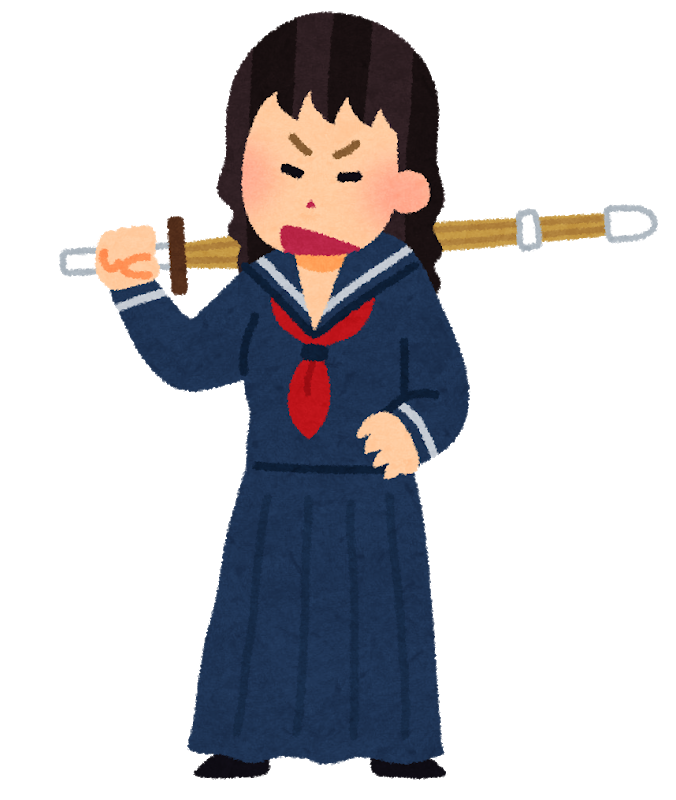Sukeban: Japanese Delinquent Girls in the 1970s
Sukeban are Japanese female gangs characterized by altered school uniforms with long skirts and rolled-up sleeves, that are a continuous movement of reveling schools.
Let’s find out their subculture and fashion.
What is Sukeban?
Sukeban (スケバン) refer to delinquent Japanese girl gangs or the boss girl in a gang. The word “Sukeban” is said to come from “suke,” meaning “girl,” and “ban,” a short form of “bancho,” or a gang boss. Sukeban first appeared in the 1960s, as a female equivalent to the male bancho gangs or a girlfriend of male bancho. Initially, gangs formed small groups and sneaked out for smoking in the bathroom at school, but gradually the groups grew bigger and got involved in criminality.
It was not until in the 1970s that sukeban came to be widely known with the release of a magazine titled “Sukeban.” At that time, sukeban had a reputation for violence and shoplifting. Groups differed in size from Tokyo’s United Shoplifter’s group consisting of about 80 girls to the largest gang group known as Kanto Women Delinquent Alliance, that was rumored to have around 20,000 members.
Sukeban Subculture
Becoming skeban was a form of showing a rebellion against the society. In the 1960s, women did not much freedom in their life, from the way they behave to which career they choose. That situation drew those who had complaints those norms into the world of sukeban.
Genrerally, each school formed its group of skeban, and they battled with a different skeban group to win over the other and increase members. Making the group bigger meant the strong power over other skeban groups, which drove then into battles even more.
Sukeban followed strict rules in the group and breaking them resulted in “lynching.” Lynching included several levels of punishments, and burning with cigarettes was the most common punishment. Reasons for punishment varied, such as cheating with someone’s boyfriend, showing disrespect for superior members, speaking to rival group members, and using drugs.
What does Sukeban Fashion Look Like?
Sukeban dressed themselves in customized school uniforms. They rolled up the sleeves, lengthened the skirt to the ankle, shortened the blouse, and wore sneakers with the heel part stamped. The uniforms usually had stitches of rose and Chinese characters (kanji). They also dyed hair light brown, sometimes bleached or dyed almost blonde. They didn’t put heavy makeup, but thin eyebrows were a symbol of sukeban makeup.
Adding to these features, sukeban usually wore surgical masks and carried cigarettes and umbrellas/razor souards. In the 1980s, sukeban fashion shifted to “Tokko fuku,” which were worn by Boso-zoku, gangs associated with customized motorbikes. Around the 1980s, sukeban fashion and culture were gradually replaced by the gal or kogal culture.
Spread of Sukeban
From the 1970s onward, movies, literature, and manga featuring sukeban were continuously produced. Most movies were exploitation movies, created by Toei company as a sub-genre of the mainstream culture for softcore pornographic movies known as Pink Films. Pink Films were made at low cost, often using the same actresses such as Reiko Ike and Miki Sugimoto.
The most famous movie is “Sukeban Deka (スケバン刑事).” Sukeban Deka was originally the manga series run from 1976 to 1982, illustrated by Shinji Wada. It then became the TV series, broadcast from 1985 to 1987. Sukeban featured a delinquent girl named Saki Amamiya who was scouted by the police to be an undercover detective. She was given a yo-yo as a weapon and made to infiltrate to investigate criminal activities.
